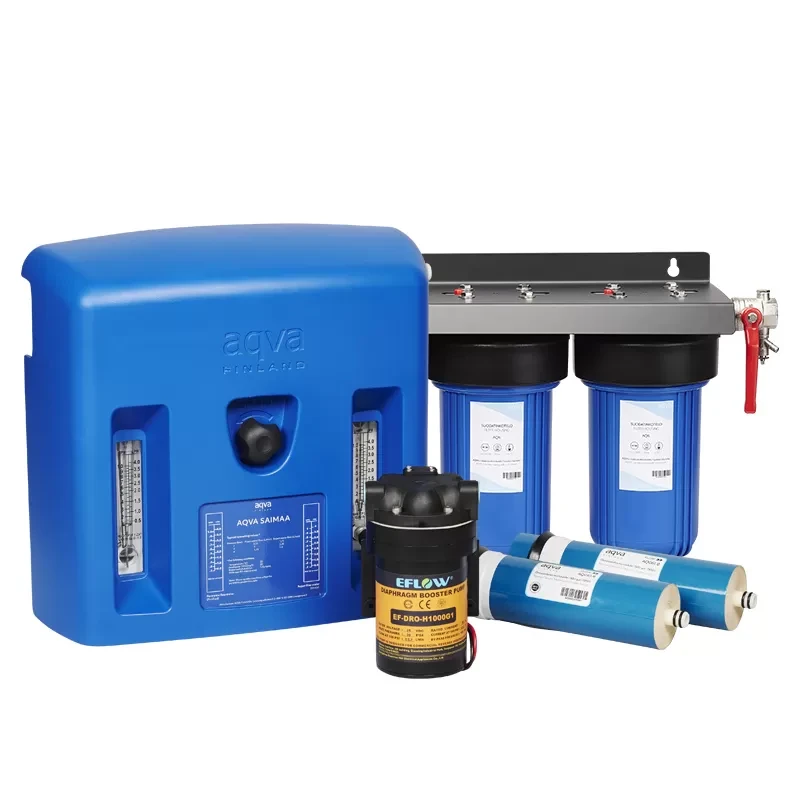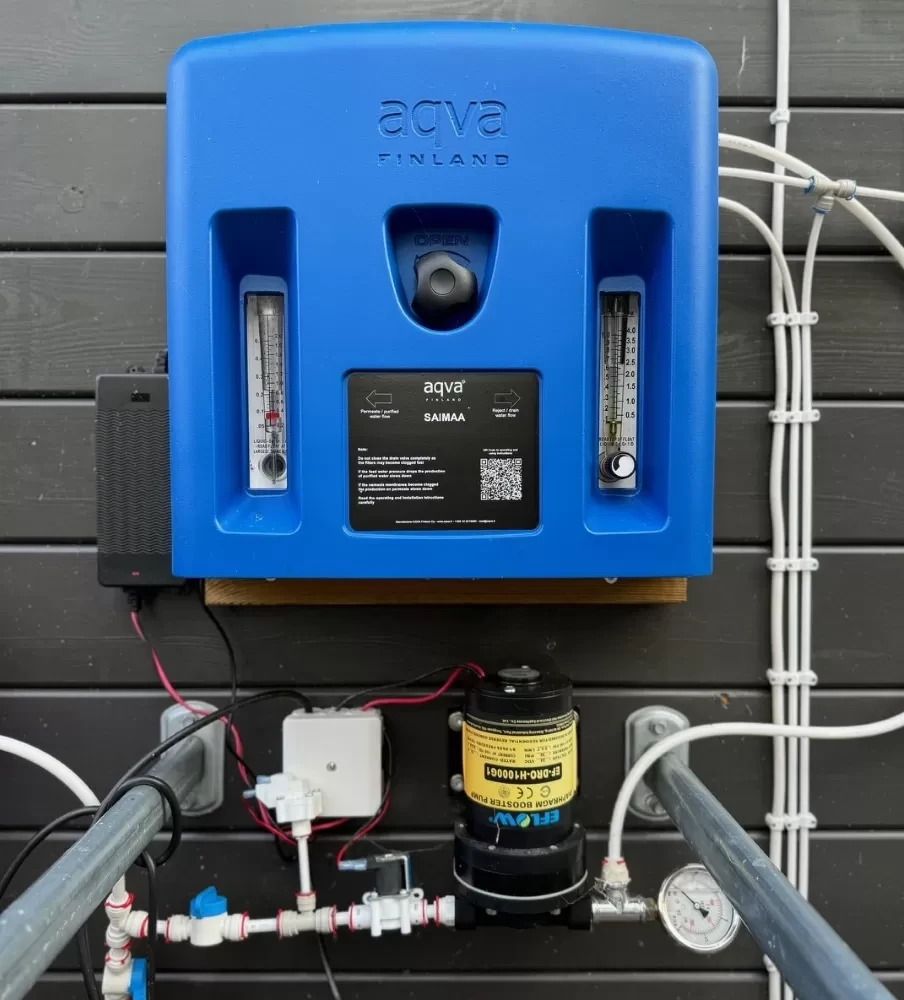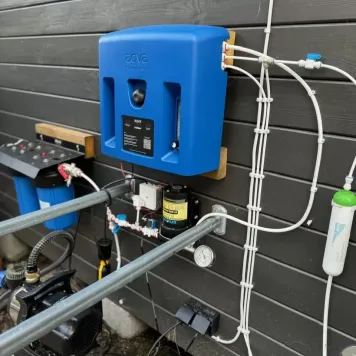AQVA SAIMAA MINI Reverse Osmosis System, Drinking Water from the Sea, 36 L/h
Tilaa saapumisilmoitus sähköpostiisi, niin saat heti tiedon kun tuotetta on jälleen saatavilla.
Delivery time: 1-5 business days.
AQVA SAIMAA MINI Reverse Osmosis System, Drinking Water from the Sea, 36 L/h
This reverse osmosis system is designed for purifying drinking and cooking water from seawater, producing 36 liters of clean water per hour.
It is easy to install, set up, and use! The system can also be expanded to meet larger needs for appliances like washing machines and showers. In such cases, the system can be upgraded to match product code AQ011-1-B.
The pressure booster pump included in the package is installed with JG quick connectors in the water line between the pre-filter unit and the reverse osmosis unit. As a separate unit, it is easy to mount on a wall. The system is sufficient to cover the drinking and cooking water needs of a typical family.
- It is easy to use and maintain, even in seasonal use at summer cottages.
- It removes difficult-to-eliminate compounds, such as salt, humus, and 99.9% of cyanobacteria toxins, producing clear, clean water from seawater. The suspended solids and humus content of the water source may affect the lifespan of the filters slightly, but pre-filters are typically replaced once a year, and osmosis membranes every two years.
- The system includes a two-stage pre-filtration with the AQVA L-sized filter package.
- It produces purified water through a float switch or, alternatively, by using a standard ON-OFF switch (not included in the package). It operates on low-voltage 24VDC.
- When filling a water tank (not included), the water level is regulated by an automatic float switch or ON-OFF switch (not included), used when water production is desired.
- The water purification capacity is approximately 36 liters per hour at 9 bar supply pressure and 5‰ salinity. (The salinity in coastal areas of Finland typically ranges between 2‰ and 7‰, depending on the location.)
- The recommended operating pressure through the booster pump is 7-9 bar. The pressure is adjustable through the flush water valve on the osmosis unit.
- With the more efficient AQVA Baltic osmosis membranes, the salt removal efficiency is 95-97% (included in the package). Water temperature, membrane usage rate, and the set supply pressure will affect performance.
Booster pump specifications:
- Voltage: 24 VDC
- Nominal current: 5.5 amperes @ 10 bar
- Nominal power consumption: 132 watts
- Energy consumption to produce 36 liters of water through the reverse osmosis unit is approximately 132 Wh.
*Power consumption of the pump is affected by water temperature, salinity, and filter usage. Additionally, energy consumption depends on the possible use of a well, sea, or lake water pump, and a distribution pump, which operates occasionally when water is used. For example, when using a 500W seawater pump, its estimated energy requirement for 36 liters of water is approximately 180 Wh. In this case, the seawater pump and booster pump together would consume about 312 Wh to produce 36 liters of clean water.
The system includes
- AQVA SAIMAA reverse osmosis unit for seawater (product code: AQRO-SA-B)
- Two-stage pre-filtration for suspended solids, humus, odors, and water softening with the AQVA L-sized filter package (product code: AQ1L, includes two filters and a wall-mount bracket)
- Post-filtration AQ006-PM, which alkalizes the water by adding small amounts of calcium and magnesium, restoring minerals to the otherwise purified water
- Connections to link the reverse osmosis unit to the pre-filter and pressure booster pump.
A raw water suction pump must be purchased separately.
Filters that should be replaced at least every two years:
- Reverse osmosis membrane x 2, AQ061-B
Pre- and post-filters that should be replaced at least once a year:
- AQCB-L
- AQMF1-L, a mechanical fine filter, which may need to be replaced more frequently depending on sediment and suspended solids in the water
- Post-mineralization filter, AQ006-PM
Winter storage
The reverse osmosis system can be stored during winter without additional valves by sealing the water lines with the plugs provided and moving the unit to a warm location. First, close the water line, drain the pipes and housings, then plug the reverse osmosis unit and store it in a warm place. This way, the membranes do not need to be removed. In the spring, when reactivating the system, flush the membranes by running water for approximately 30 minutes, after which the water can be used normally.
Tilaa uutiskirje







